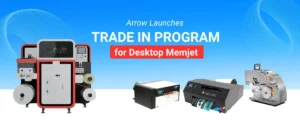Table of Contents
Choosing the Right Label Material and Varnish
Choosing the right label material and varnish is essential for durable and visually appealing labels in various industries. You must make informed decisions based on industry-specific requirements and challenges.
In this blog post, we will explore selecting the right label materials and varnishes for specific industries. These industries include pharmaceuticals, liquor bottles, wine bottles, flexible packaging, food packaging, and chemical label printing.
Understand Your Project Requirements:
Before considering label material and varnish options, it’s important to understand your project’s specific needs in your industry. Consider the following factors:
- Pharmaceuticals: Labels for pharmaceutical products require excellent chemical resistance, tamper-evident properties, and legible printing abilities. This is necessary to ensure the labels adhere securely to different types of packaging.
- Liquor Bottles: Liquor bottle labels must endure moisture, handling, and environmental exposure while looking visually appealing.
- Wine Bottles: Wine bottle labels should be visually appealing and durable, as they often face refrigeration, humidity, and contact with water.
- Flexible Packaging: Labels for flexible packaging, like pouches and sachets, should be flexible, durable, and resist moisture and tearing.
- Food Packaging: Labels for food packaging must comply with food safety regulations and resist moisture, oil, and other food-related substances. They should also maintain their integrity during storage and transportation.
- Chemical Label Printing: In chemical label printing, labels must endure exposure to harsh chemicals, solvents, and extreme temperatures. They should also stay easy to read and comply with safety standards.
Label Material Options:
Different industries demand specific label materials due to their unique requirements. Consider the following options:
- Pharmaceuticals: Pharmaceutical labels commonly use BOPP (biaxially oriented polypropylene) or PET (polyethylene terephthalate) films. This is due to their excellent print capability, durability, and resistance to moisture, chemicals, and abrasion.
- Liquor Bottles: Synthetic materials like polypropylene or vinyl films are ideal for liquor bottle labels. This is due to their moisture resistance, durability, and ability to withstand handling and refrigeration.
- Wine Bottles: Wine bottle labels often utilize high-quality paper or textured films to achieve an elegant and sophisticated appearance. Usually, people prefer vinyl or polyester films for their durability, moisture resistance, and ability to resist UV fading.
- Flexible Packaging: Flexible packaging labels benefit from flexible film labels made from polypropylene or polyethylene. These materials offer excellent moisture resistance, durability, and flexibility for conforming to different packaging shapes.
- Food Packaging: Food packaging labels need materials that meet food safety regulations and resist moisture, oil, and other food-related substances. Common options include direct food contact materials like direct thermal paper or films with food-grade adhesives.
- Chemical Label Printing: Chemical labels demand durable and chemical-resistant materials such as polyester or polypropylene films. These materials offer excellent resistance to harsh chemicals, solvents, and extreme temperatures, ensuring safety, compliance, and longevity.
Varnish and Coating Options:
Applying varnish or coatings to labels enhances their durability, protection, and visual appeal. Consider the following options:
- Pharmaceuticals: Pharmaceuticals labels benefit from varnishes or coatings that provide resistance to chemicals and moisture. This ensures the labels remain intact and readable. UV varnishes offer additional protection against fading caused by UV radiation.
- Liquor Bottles: Gloss varnishes provide a shiny and reflective finish to liquor bottle labels, enhancing their visual appeal. UV varnishes protect against fading caused by exposure to sunlight, preserving the labels’ quality and brand representation.
- Wine Bottles: Matte varnishes offer a sophisticated and elegant appearance to wine bottle labels, reducing glare and protecting against scratches. UV varnishes prevent color fading due to prolonged exposure to UV radiation, maintaining the labels’ visual appeal and information.
- Flexible Packaging: Flexible packaging labels benefit from varnishes or coatings that offer protection against moisture, chemicals, and abrasion. These coatings enhance the labels’ durability, ensuring they remain intact throughout the flexible packaging process and end-use.
- Food Packaging: Food packaging labels often require varnishes or coatings that provide resistance to moisture, oil, and other food-related substances. Consider coatings specifically formulated for food packaging that meet regulatory requirements while enhancing durability and visual appeal.
- Chemical Label Printing: Chemical labels demand varnishes or coatings that provide resistance to harsh chemicals, solvents, and extreme temperatures. These coatings ensure the labels are durable, legible, and comply with safety standards.
Empowering the Workforce:
Empowering the workforce is a crucial aspect of success in the digital printing industry. With rapid advancements in technology, it is essential to equip employees with the necessary knowledge and skills. This knowledge will allow them to harness the full potential of digital printers.
By providing employees with hands-on training, businesses can enhance their productivity. Reduced downtime and utilizing printers to their fullest capabilities will lead to enhanced productivity. Empowered employees feel confident and motivated, which translates into higher quality outputs, improved efficiency, and better customer satisfaction.
Additionally, investing in the continuous development of the workforce fosters innovation and flexibility. This will enable businesses to stay ahead of industry trends and embrace new opportunities in the dynamic digital printing landscape.
Empowering the workforce is a win-win situation. It benefits employees and adds to the overall growth and success of the digital printing business.
Conclusion:
Choosing the right label material and varnish is crucial for achieving optimal durability, aesthetics, and functionality in different industries. By understanding your project’s requirements and considering industry-specific factors, you can make informed decisions when selecting label materials and varnishes.
To achieve the best outcome for your specific needs, evaluate options, conduct testing, and seek expert advice. With the right label material and varnish, you can create durable, visually appealing, and functional labels. These labels will effectively represent your brand and products in your industry.
Contact With Our Team Now

Breaking News: Arrow Systems Partners with BUSINESSWARE to Transform Digital Printing Across Greece & Cyprus

Sid Sistemas de Impresión in Spain Installs ArrowJet Aqua 330R and DPR Taurus to Bolster Label Production

Step Inside Innovation: Arrow Systems New Experience Center Opens in Ontario, Canada.


